In a July blog about Mexican Black Bellied Whistling-Ducks, I wrote that when one bows its neck and hisses, the other duck backs away. Well! That’s apparently not always true.
The other morning we had a rumble like a scene from “West Side Story” between opposing duck-gangs on the banks of the Resaca.
It was bill-to-bill combat. Feathered spectators closely ringed the main attraction. While the skirmish went on, the other ducks bowed their necks and hissed at each other as others lifted up and down, wings flapping. I would call it jumping up and down if it were a crowd of enthusiasts at a spectator sport.
The main opponents clacked at each other’s bill. One captured the opponent’s bill and flayed him out holding him to the ground like “Walker, Texas Ranger” defeating the enemy after an amazing martial arts scene. The Whistler wasn’t down for the count though. Pretty hard to throw finishing blows with a feathered wing.
The vertical leaping and flapping continued with ducks advancing and retreating. I expected to see them placing bets and swapping money. Within three minutes, both gangs had retreated with an occasional shallow attempt to hiss and continue the fight. Then, peace reigned along the Resaca for the rest of the day.
I was so mesmerized, I didn’t want to break away and reach for my camera, so you’ll just have to take me at my word.
In other news, large gatherings of birds trigger one of my favorite topics – collective bird nouns.
A spying of Cormorants.
A notice came through our ListServ saying migration is here. I thought, what? Can’t be, it’s summer! Amazingly, it’s mid-August already and call it migration or the summer hols, this week saw two dozen cormorants on the Resaca, coming through for a couple of days.
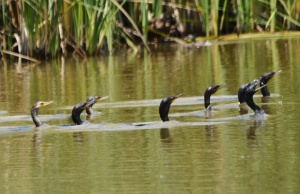
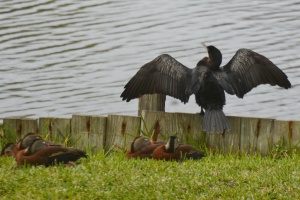
A raft of coots.
A new sight followed within days — nearly 20 American Coots — more than our normal two permanent residents.
The American coots are easy to recognize from a distance, they are nearly all black (the book says slate-gray) with a short white bill.
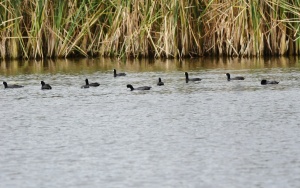
Generally always in the water from my observations, one this year decided to investigate the shore.
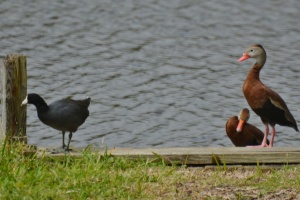
American Coots eat fronds, leaves, seed and roots of aquatic plants, according to my favorite bird guide book. They also eat insects, amphibians, mollusks, and small fish as this one seems to have done.
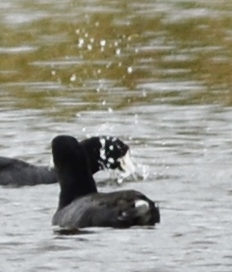
A badelynge of ducks.
More groups of Whistling Ducks are still passing through, not for longer than an overnight stop before travelling on. On the Resaca, the babies are growing up and still in family groups, although the young won’t get their colorful bills and feet until next year.
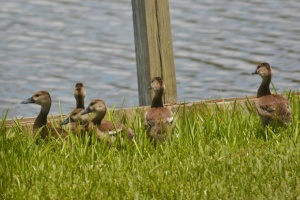
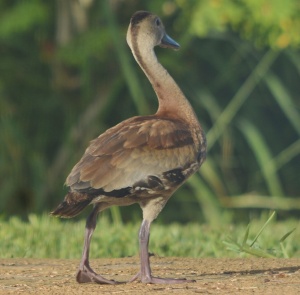
A dole of doves.
The white-wing dove population has doubled. We can tell the visitors, they are the ones that fly off when we approach the window closest to the mesquite branch where I supply sunflower seeds each morning. The regulars are used to our shadows and continue to eat.
An announcement of Kiskadees.
Also this week the Great Kiskadees are back dive-bombing the fresh-water pond in the mornings. Kiskadees dive for fish and tadpoles, catch crawling and flying insects as well as frogs, small lizards, baby birds and mice. They will eat fruits and berries when insects are not available.
Kiskadees are permanent residents on our spread but they seem to leave for a couple of months each year. Or they find a body of water not within my view during the summer.
What I think is that they fly off to the riparian forest at the back of our property to raise families and return when the babies have fledged. My observations could be wrong. If someone has an answer, I’d love to hear it.
What are some of your recent sightings that indicate this semi-annual cycle is getting on? Or play around with inventing your own collective nouns for groups of birds and share with us.

Leave a Reply